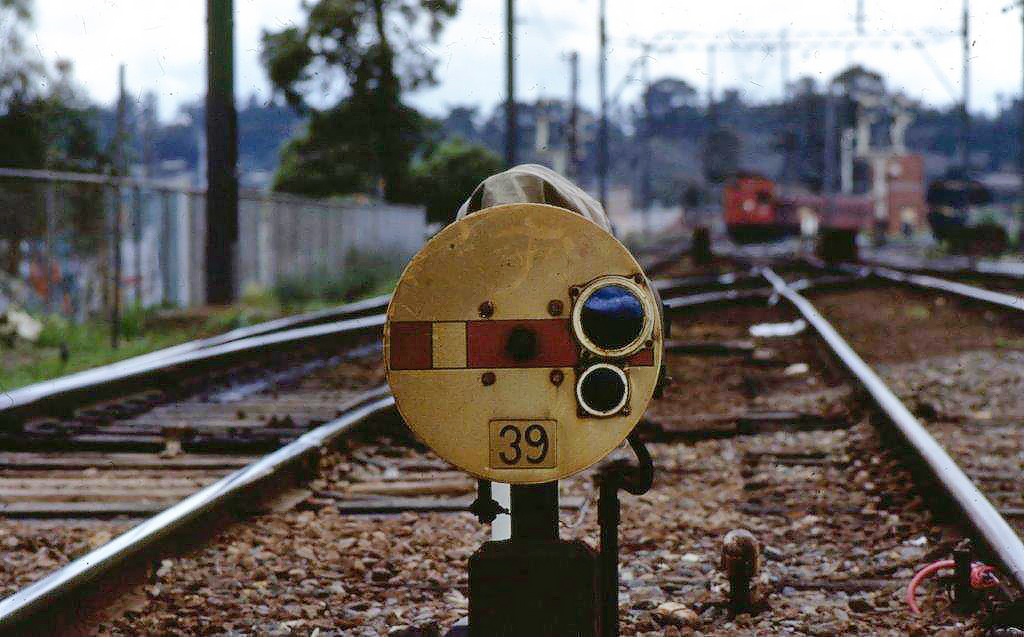2 Position Dwarf Signals
| Dwarf signals normally control movements from a siding to a mainline or from mainline to a siding or from a mainline to mainline. The reason why 2 position dwarfs were introduced is a bit of a mystery as they perform the exact same function as a disc. Like discs, a 2 position dwarf only tells you that the points are set for the move, they can be placed to "proceed" when the track ahead is occupied. They are very similar in appearence to a 3 position dwarf signal. In later years some 2 position dwarfs were light signals, in this form they were indistinguisable from a 3 position dwarf. The big difference between a 2 and 3 position dwarf is that a 2 position dwarf showing a green light, "proceed" did not imply the track was clear, a 3 position dwarf displaying a green light "clear low speed" tells the driver that the track is clear to the next signal. It appears that a purple light was prefered instead of a red light for ground mounted signals to avoid confusion with red hand signals in shunting yards |
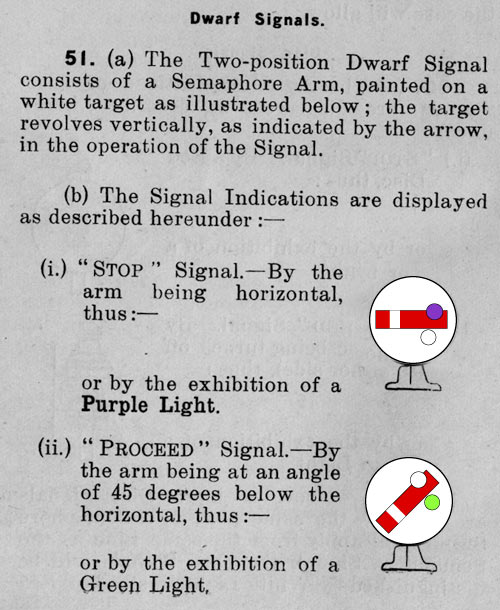
|
The current rules allow for a red or purple light to be shown at the stop position.
|
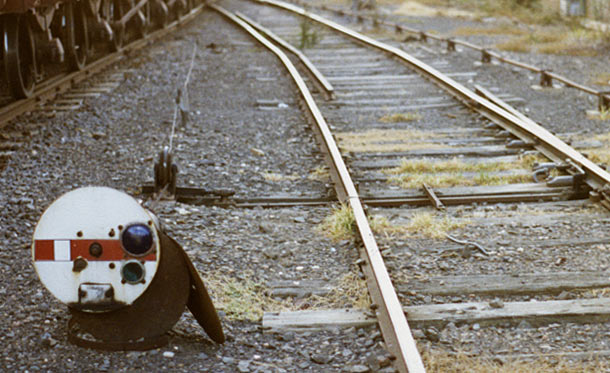
| ABOVE: This 2 position semaphore dwarf controlled movements from the refuge siding on the showgrounds/racecourse line to the showgrounds platform. The showgrounds area had a Jekyll and Hyde personality. During passenger traffic all signals were in use and strict block/interlocking procedures were followed. When there was no passenger traffic the area was worked as a collection of sidings with most signals covered over or crossed "out of use)" Note that in the above photo the catch points are closed even though a rake of wagons is on the "mainline" The circular disc that covered this dwarf when not in use can be seen laying against the signal. Also worth noting is the wire operating the signal going through a rotary point detector for the catch point. Simply stated, the dwarf could not be placed to "proceed" unless the catch point was proved to be closed. |
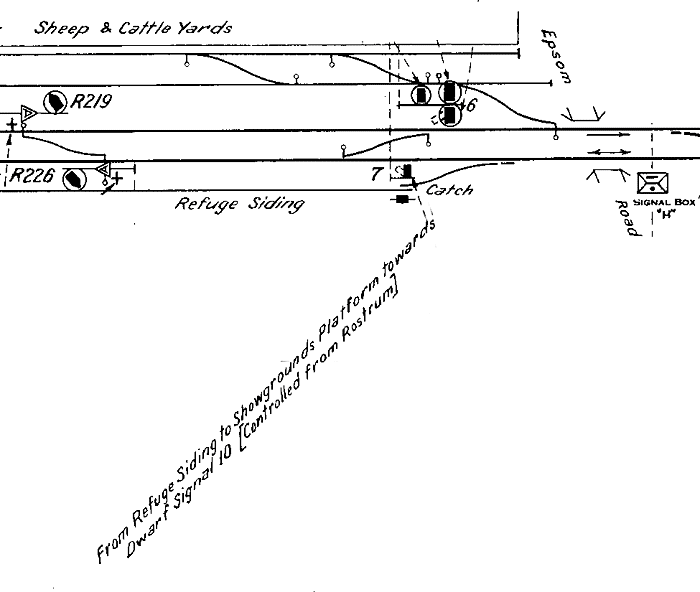
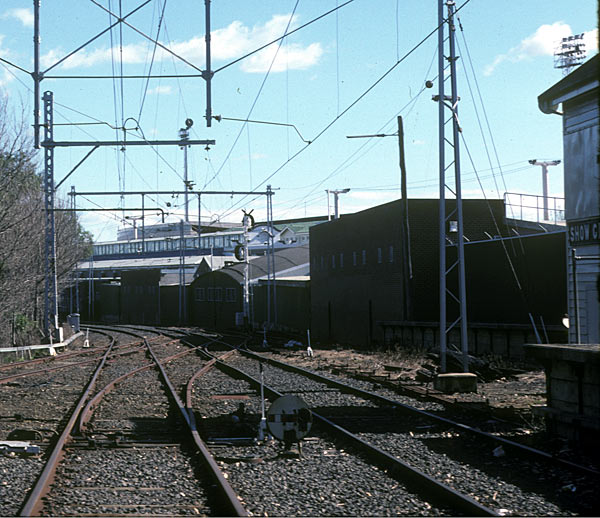
| Show trains arriving at the Showgrounds platform arrived onto the up line, this dwarf at the down end of the Showgrounds platform protected the points immediately ahead of the dwarf and allowed a train to shunt from the platform into the loop line where several trains could be stored. |
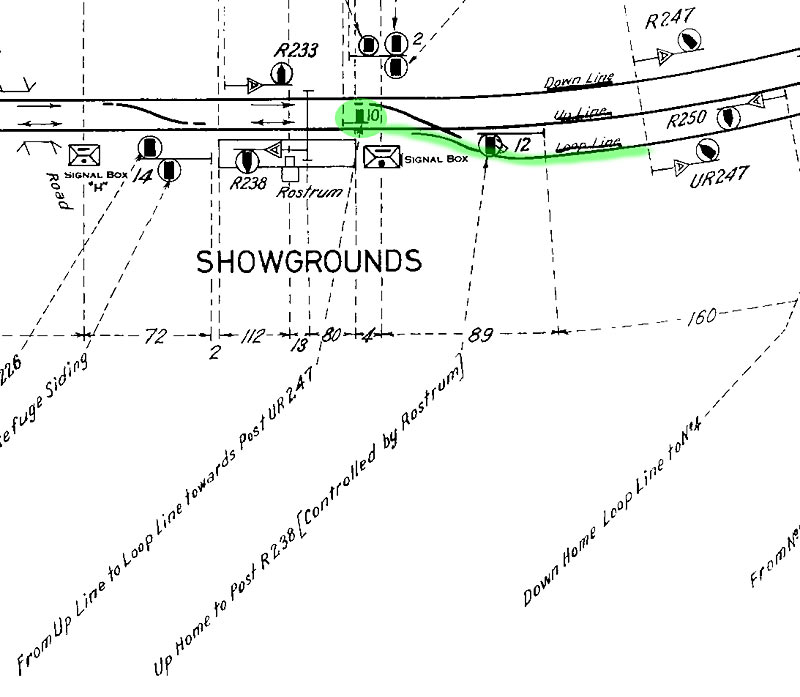
BELOW: Post 39 at Ringwood controlled movements from the middle road towards the Belgrave or Lilydale line. Despite the fact that Ringwood was predominantly a three position yard this dwarf was two position as it took a train onto the single line electric staff sections. It was changed to a three position light dwarf when the section to Croyden was changed to ATC in Nov 1973. (photo courtesy Doug Miles)
